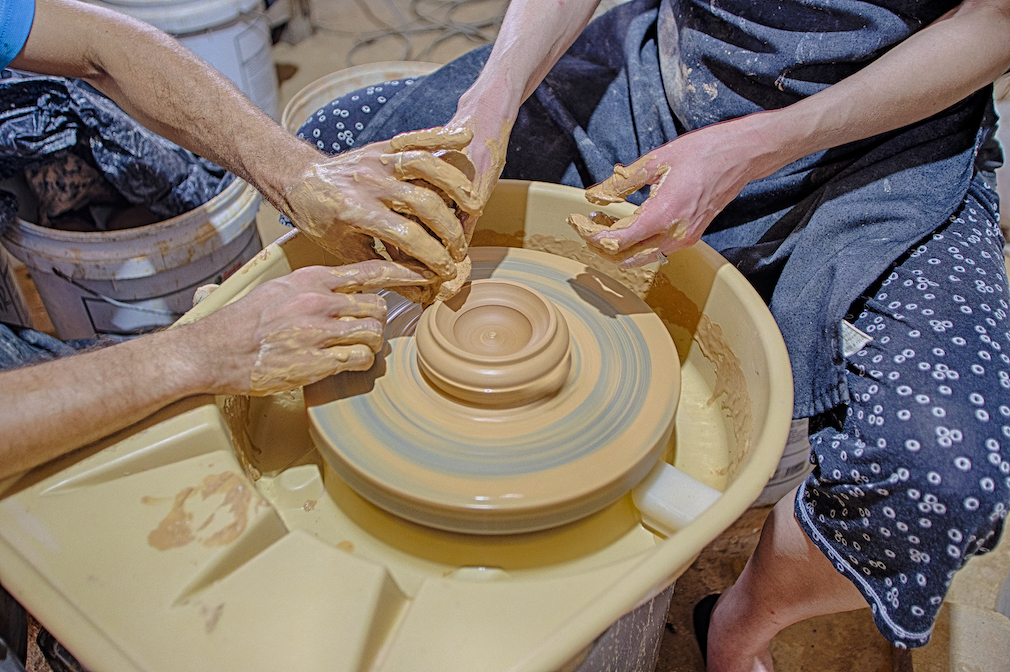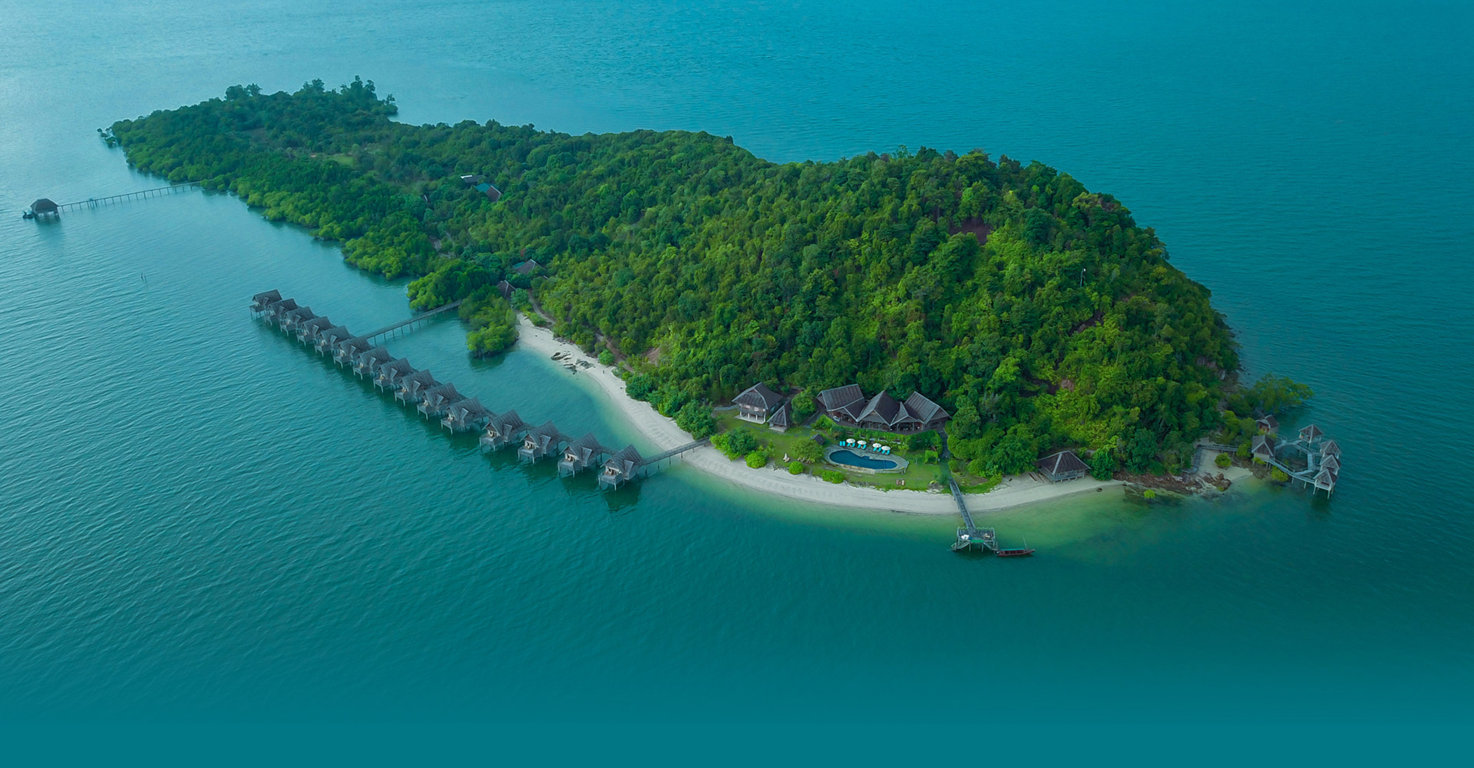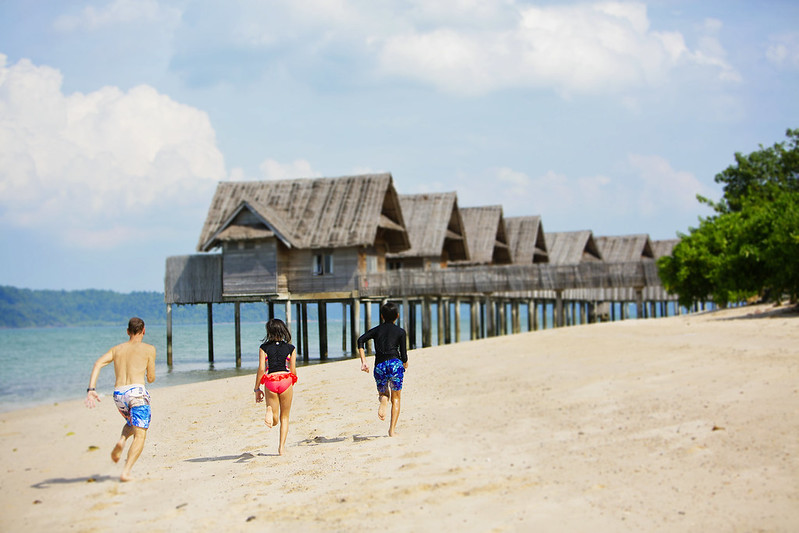A Pottery Blessing
October 18, 2021
Our Pottery Studio
Back in September of 2014, Jennie and Paul Christensen joined Telunas Resorts. Jennie was directing school group programs and Paul was hired on an artist in residence (among other things). Paul suggested to the resort owners the idea of building a pottery kiln that could be used for delivering guest experiences and making handmade souvenirs from the clay of Sugi Island. They agreed and the pottery studio was born.
Locals identified several locations where good clay existed. Paul built a small kiln to start that was used for testing the quality of the local clay.
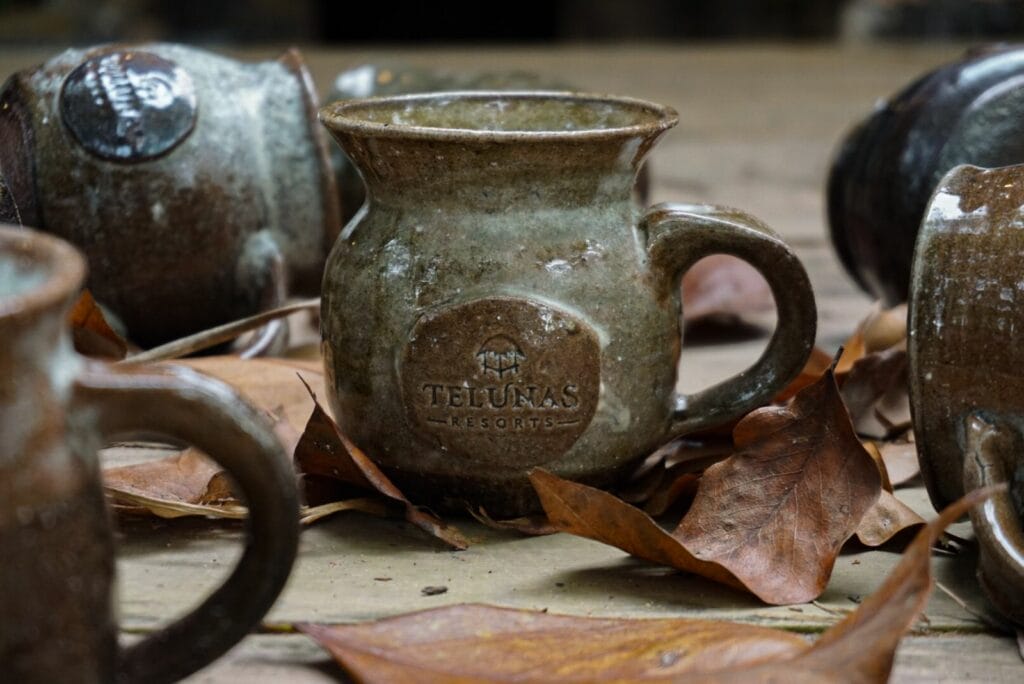
The Test Kiln
In addition to testing the clay, the small kiln was used to test glazes in order to try and discover a few recipes for a good stoneware glaze using local materials. The results were promising.
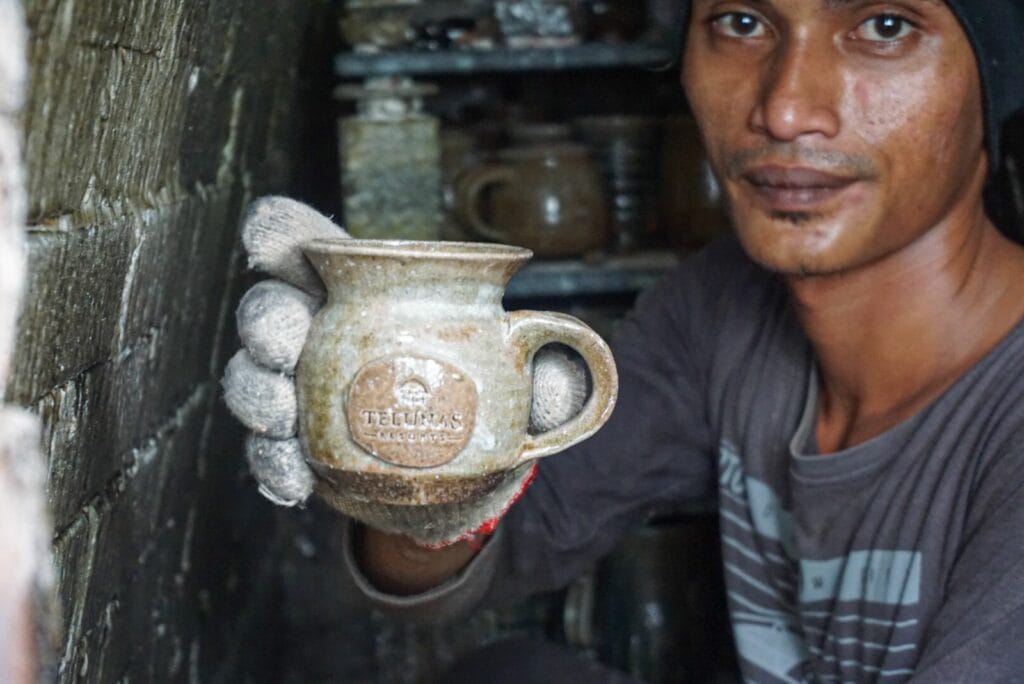
The Manabigama
In March 2015, Paul, Supriyadi, Yan, and other staff members built a kiln. The design is called a “manabigama” which means “beautiful learning kiln.” It will hold about 150 to 200 pieces at a time, depending on the size of the pieces.
Typically it takes about 25 hours of stoking the wood and 2 cubic meters of firewood to reach stoneware temperatures. We use recycled firewood that comes from building projects, landscaping trimmings, and trees that have naturally died in the forest that need to be cut down.
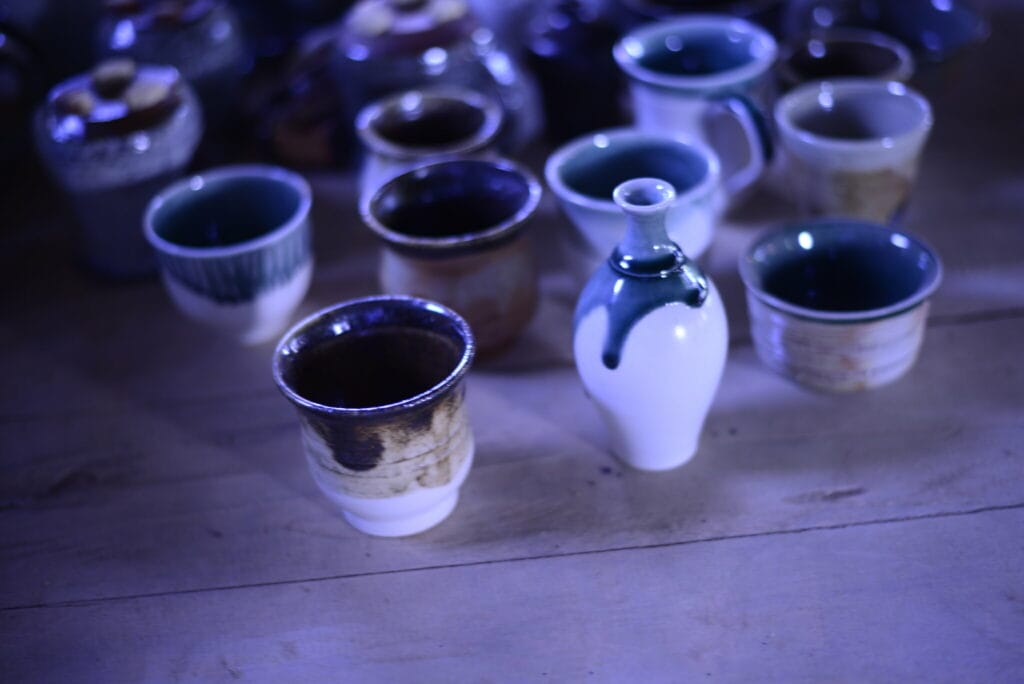
What makes a wood-fired kiln special?
A wood-fired kiln like this is special because it creates something called atmospheric glaze effects. Alkalis and alkaline earth metals like sodium, potassium and calcium that are in the wood ash get pulled through the kiln, and wherever they land on the pottery they affect the surface of the clay and the glaze.
You can tell if a piece has atmospheric glaze effects by flipping it over and looking at the bottom. In a kiln that does atmospheric glaze effects, you have to put little clay wads on the bottom of the pieces in order to prevent the clay from getting fused to the kiln shelves. After the firing, the wads are knocked off, but they leave behind tell-tale marks.
In a typical electric or gas-fired kiln, you don’t get the atmospheric effects, and have to work a little harder at creating interesting variety. However, in a kiln with atmospheric effects like this wood-fired kiln, the firing process itself plays a significant role in the appearance of the finished pieces.
The Potters
At Telunas, the landscapers are also part-time potters, and some of them produce a lot of the work that we sell in our souvenir shop. Supriyadi and Yan both have experience in carpentry, but hadn’t been exposed to ceramics until they came to Telunas. They both had a creative streak, however, and were interested in learning and willing to work hard.
A lot of people in the local villages have large stoneware grain jars or water vessels that they have salvaged from old shipwrecks, but noone in this area was making stoneware.
When Supriyadi and Yan came to work, one of the challenges was figuring out vocabulary for talking about pottery. Pointing to the rim or lip of a piece Paul would ask, “what do you call this part of the mug?” and Supriyadi wouldn’t know what to call it even in the local language. They worked together to figure out a working vocabulary for talking about ceramics.
Pottery Lessons
From the very beginning, there was a desire to do pottery lessons with guests. One of the problems with pottery is that clay normally cracks if you dry it too quickly, and can break if it is fired too quickly. Clay likes to go slow, and it really likes having about 2 weeks to dry out between the time when it was made and the time that it gets fired. This makes it difficult to do any kind of pottery activity with a fast turnaround time that allows guests to take something home.
So we developed a very popular activity that is centered around making and decorating a 4” ceramic tile. Our visitors make the tile as part of the pottery lesson and typically donate it to our stockpile of tiles. We save them until we have enough to do a firing, and then fire them here. Then when we do local service projects we give the tiles to the local schools as a gift to commemorate the experience of working together, and they put up a tile arrangement somewhere as a way to remember and value the relationship. The local schools love it!
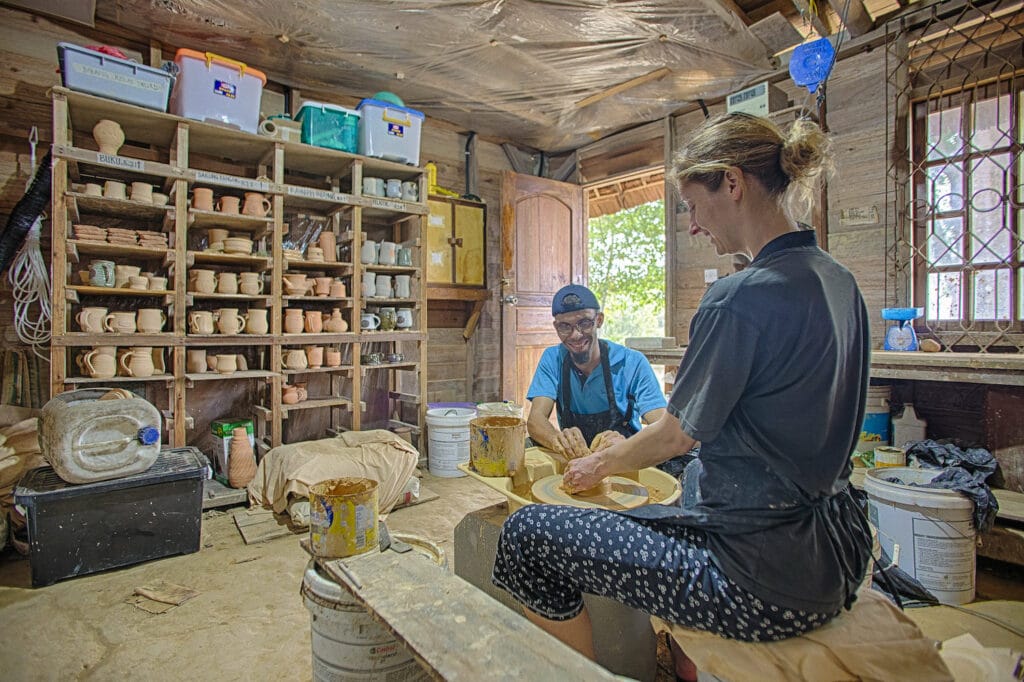
A Small, Niche Market
Our pottery studio is something that helps to differentiate Telunas from other resorts in the area. We are the only resort in the region that has a pottery studio.
We don’t export any pieces, and our main market outlet is at Telunas, selling pottery lessons and souvenirs. We do supply a few pieces to Anchor Cafe in Batam and also just recently did a commission for a spa in Batam.
Our potters work part time making pottery, part time doing landscaping and waste management, and helping out with the facilities.
Since we only fire the kiln a few times a year, we are able to use the natural supply of firewood from landscaping cuttings, waste motor oil, and waste kitchen oil as potential fuel sources. There is minimal impact to our environment.
Adding Value With Local Materials
One of the greatest things about the pottery is that we use local materials and add value to them. When you pick up a piece of pottery, you are literally picking up a piece of Sugi Island. It’s clay from Semokol Point, wood ash from scraps from building projects and landscaping cuttings from the resort, all part of the piece. We take what we have lying around, shape it, burn it, and voila!


